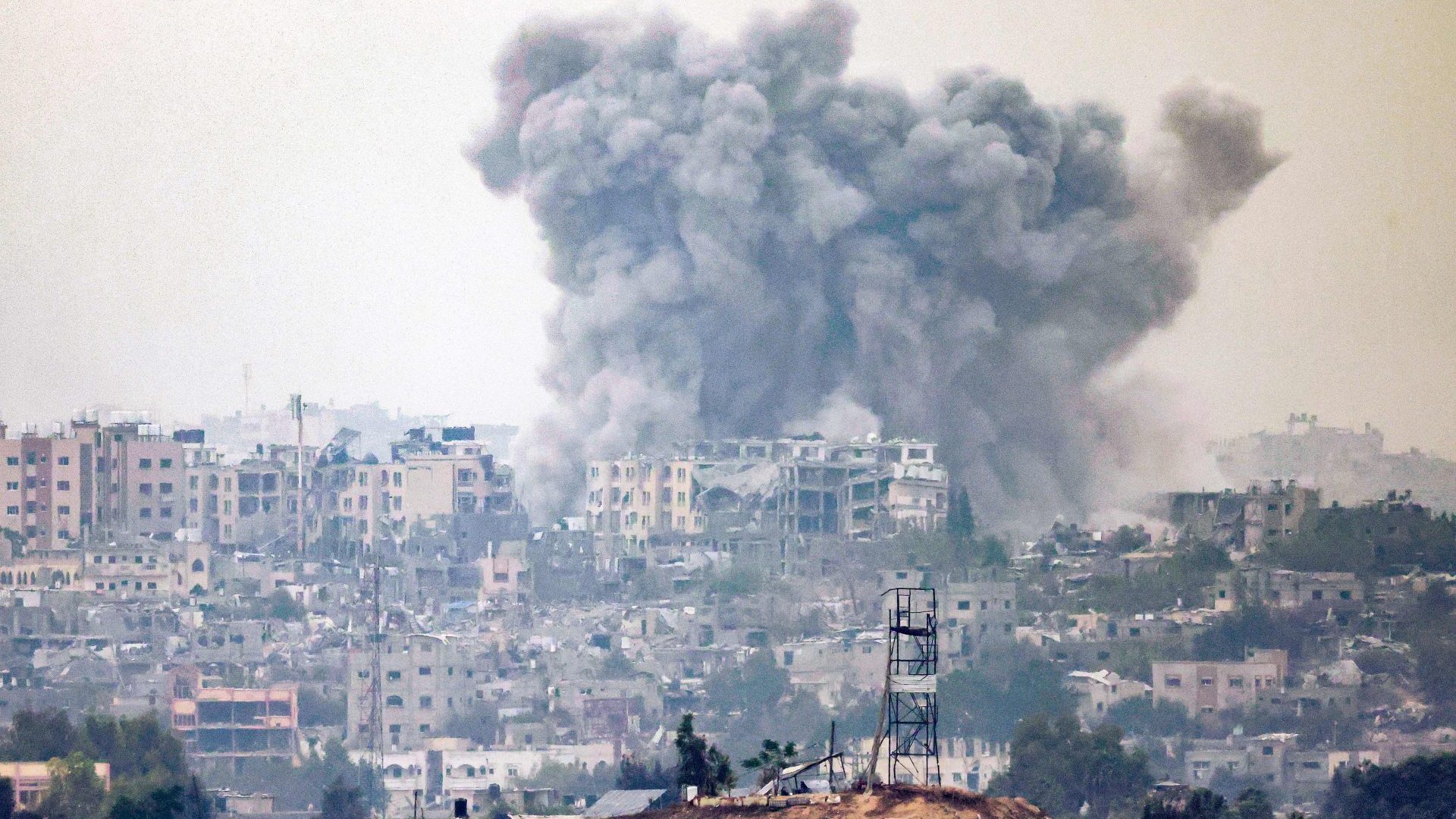The US has denied the overnight F-16 strikes against Iranian-backed militias in Syria are connected to the war in Gaza. The US claim they are an act of self defence as their bases in the region have seen an increase in attacks. However, the spike in attacks was likely due to US support for Israel since the 7 October terrorist attack by Hamas. As the expected Israeli ground offensive nears, there are grave concerns over an escalation into a wider conflict, that these air strikes will have done little to diminish. Are these fears founded? If so, what could such an escalation look like?
Writing on the Greek Tragedies, poet Anne Carson asks and answers, “Why does tragedy exist? Because you are full of rage. Why are you full of rage? Because you are full of grief.” Those who have long campaigned for the Palestinian people and their tragic story have underestimated the grief caused in Israel by the recent brutal terrorist acts. That grief has turned to rage. Armies motivated by rage tend to make short-term decisions and lose focus on their strategic objectives. On his visit to Israel, President Biden was unequivocal in offering support but caveated it with advice from bitter experience. The US, as post-9/11 grief turned to rage, rampaged through two wars of revenge in Iraq and Afghanistan which did little more than set in motion further cycles of grief and rage.
However, a ceasefire seems unlikely. The US does not support one, reasoning that it would allow Hamas to recover and resupply. Hamas has said Israeli hostages cannot be freed until one is agreed. Israel has lost trust in the UN after Secretary-General Guterres’ recent speech and the US is seen as an Israeli ally by Hamas’ main supporters. (China could yet have a role to play, and the US would be wise to request their support in containing Iran). A ground offensive by Israeli forces into Gaza seems inevitable. The extent of this offensive will likely determine any escalation from other actors who will each have their own red lines.
To what extent the Israeli Defence Force will accept collateral damage in achieving their objectives will be key. The Israeli government’s statements on the complete destruction of Hamas won’t have helped the military planners who are attempting to craft practical and achievable objectives. These will include the retrieval of the hostages and destruction of Hamas’ tunnel network – both of these will be incredibly challenging. As difficulty increases, so do casualties.
Hamas has called on Palestinians and other Arabs “to sweep away the Israeli occupation.” Other than claims of an attempt by Iranian backed Houthis in Yemen to fire long-range missiles at Israel and limited border skirmishes with Hezbollah, this call to arms has not been taken up. The threat of escalation does not come from neighbouring states that have previously fought Israel. Egypt and Israel have been at peace for more than 40 years. Syria is still managing its own internal conflicts. The threat is from non-state groups.
Hamas is also in the West Bank, but this is controlled by Fatah, their bitter rivals. As the casualties mount, there may be a point where Fatah turns a blind eye to Hamas activity being launched from there. More of a strategic concern for Israel will be Hezbollah’s response. Despite receiving support from Iran, as Hamas does, Hezbollah did not seem to be aware of the 7 October attack and are often considered rivals: Hamas are Sunni and Hezbollah Shia. There would be a point, however, when Hezbollah could no longer stand by and watch the destruction of fellow Muslims at the hands of their enemy. The US presence in the region, and likely the recent airstrikes, is intended as a message to Iran to make sure this doesn’t happen. Hezbollah’s entrance would be the biggest trigger for a regional conflict and direct US involvement.
If the war in Gaza and Israel were to escalate, the impact would be felt all over the world. Al-Qaida and ISIS have both called on followers to strike Israeli, as well as US and Jewish targets. Images of dead muslims in Gaza can be as motivating to extremist groups as similar images from Baghdad and Kabul proved in recent decades. We all have a stake in de-escalating what is happening.
It is also crucial to focus on what happens after the offensive ends. Israel will not occupy Gaza – what happens to those Palestinians left in the rubble? Iran will pour in support to rebuild Hamas militarily, while the offensive will have recruited a new generation of fighters.
Benjamin Netanyahu should not survive this failure of intelligence and security. A change in leadership could provide an opportunity for a new political direction in Israel – there can be no return to the status quo. The story of this region is as tragic as anything conceived by the Greek tragedians, we all have a stake in breaking the cycle.










